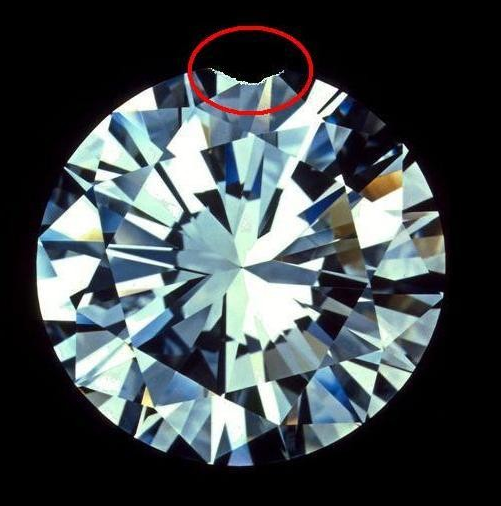Toughness refers to a diamond’s resistance to fracture or breaking when subjected to impact or stress. While diamonds are known for their exceptional hardness, which allows them to resist scratching and abrasion, toughness measures how well a diamond can withstand physical force, such as chipping or cracking. Toughness is an essential characteristic when evaluating the durability of a diamond, particularly when it comes to everyday wear and usage in jewellery.
Though diamonds are one of the hardest materials on Earth, they are not immune to damage. Due to the crystal structure of diamonds, they have certain planes of weakness that can make them susceptible to breaking if impacted along these planes. Therefore, while a diamond may not scratch easily, it can still fracture or split under the right conditions. This makes toughness an important factor in assessing how a diamond will perform in real-world scenarios, such as in rings or other jewellery that is regularly exposed to physical stress.
Understanding Diamond Toughness:
Hardness vs. Toughness:
Hardness refers to a material’s ability to resist scratching, and diamonds are the hardest known natural substance, scoring a 10 on the Mohs scale of hardness.
Toughness, on the other hand, refers to how well a material can absorb energy without breaking or fracturing. While diamonds are incredibly hard, they are not as tough as some other materials due to their brittleness. This means that while diamonds can resist scratching, they may be more prone to chipping or cracking if hit at certain angles.
Directional Hardness:
One of the key factors influencing the toughness of a diamond is its directional hardness. Diamonds have a crystal structure known as cubic or isometric, which means that their atoms are arranged in a specific way that makes them incredibly hard in certain directions but more vulnerable in others.
While the diamond is extremely hard along its axes, this structural alignment can make it more prone to cleaving or splitting along certain planes, especially when it experiences a strong impact. These planes of weakness make diamonds more fragile in some situations, particularly if subjected to sharp blows or pressure.
Toughness Rating:
Diamonds do not have a standard toughness rating in the same way that they are graded for hardness. However, toughness is typically described in terms of how resistant a diamond is to breaking, chipping, or fracturing.
Toughness can be affected by factors such as the quality of the cut, inclusions, and fractures present in the diamond. A diamond with significant internal flaws, such as inclusions, may be less tough and more likely to break or chip under stress than a flawless diamond.
Factors Influencing Diamond Toughness:
Clarity: Diamonds with inclusions or internal fractures are generally more prone to breakage. These internal weaknesses can compromise the diamond’s toughness, making it more vulnerable to impact.
Cut Quality: A well-cut diamond with proper proportions and symmetry will often be more durable, as the cut will reduce the likelihood of creating stress points where fractures could occur. A poorly cut diamond may have internal tensions that make it more fragile.
Size and Shape: Larger diamonds or diamonds with more complex shapes (like those with sharp corners or thin edges) may be more susceptible to chipping or fracturing if impacted. The shape and overall structure of the diamond can affect its ability to absorb force without damage.
Real-World Application:
While diamonds are the hardest known material, their brittleness means that they need to be handled with care. Diamonds used in jewellery, such as engagement rings or bracelets, are typically designed to avoid exposure to significant impact or stress.
For example, diamonds with sharp corners (like princess cut diamonds) or thin edges (like emerald cut diamonds) may be more susceptible to chipping than those with rounder shapes, such as the round brilliant cut, which typically has a stronger overall structure.
Bezel settings or halo settings in jewellery can offer additional protection to the diamond, keeping it shielded from accidental impact.
Toughness in Coloured Diamonds:
While most of the principles regarding diamond toughness apply to colourless diamonds, coloured diamonds may have their own unique challenges. For example, some coloured diamonds, especially those with intense colours like red or blue, may have inclusions or internal characteristics that affect their toughness.
Coloured diamonds, due to their often unique internal structures, may exhibit slightly different behaviour under impact, but they still share the same basic brittleness as other diamonds.
Toughness and Diamond Jewellery:
When choosing a diamond for daily wear jewellery, toughness is an important consideration, especially for items like engagement rings, which are subject to constant wear and potential impact.
A diamond’s setting also plays a role in how well it can withstand rough treatment. A prong setting, for example, may expose the diamond to more risk of damage, while a bezel setting can offer more protection.
Diamond toughness is an essential characteristic that determines a diamond’s ability to withstand impact and stress without fracturing or breaking. Although diamonds are the hardest material on Earth, their brittleness means they can still break along planes of weakness in their crystal structure. Therefore, toughness is closely linked to hardness but involves how well a diamond resists fractures, chips, and cracks from physical force. When choosing a diamond for jewellery, it is important to consider the diamond’s clarity, cut, and shape, as these factors can influence the diamond’s overall toughness and resistance to damage.
